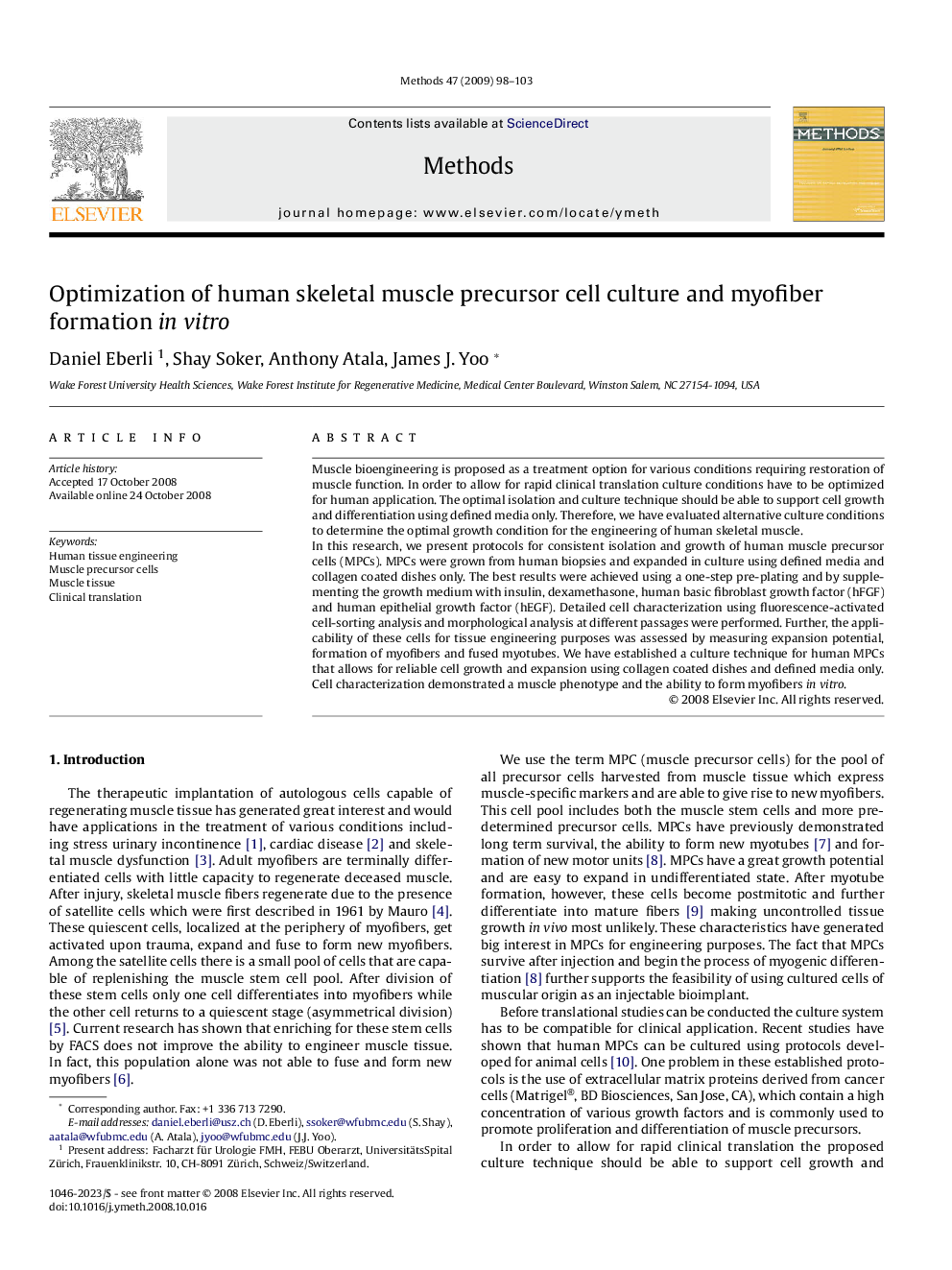| Article ID | Journal | Published Year | Pages | File Type |
|---|---|---|---|---|
| 1994243 | Methods | 2009 | 6 Pages |
Muscle bioengineering is proposed as a treatment option for various conditions requiring restoration of muscle function. In order to allow for rapid clinical translation culture conditions have to be optimized for human application. The optimal isolation and culture technique should be able to support cell growth and differentiation using defined media only. Therefore, we have evaluated alternative culture conditions to determine the optimal growth condition for the engineering of human skeletal muscle.In this research, we present protocols for consistent isolation and growth of human muscle precursor cells (MPCs). MPCs were grown from human biopsies and expanded in culture using defined media and collagen coated dishes only. The best results were achieved using a one-step pre-plating and by supplementing the growth medium with insulin, dexamethasone, human basic fibroblast growth factor (hFGF) and human epithelial growth factor (hEGF). Detailed cell characterization using fluorescence-activated cell-sorting analysis and morphological analysis at different passages were performed. Further, the applicability of these cells for tissue engineering purposes was assessed by measuring expansion potential, formation of myofibers and fused myotubes. We have established a culture technique for human MPCs that allows for reliable cell growth and expansion using collagen coated dishes and defined media only. Cell characterization demonstrated a muscle phenotype and the ability to form myofibers in vitro.
